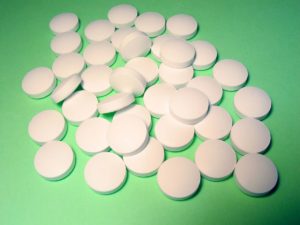Much has been written about boxing, concussions, and brain damage, but this is the first time I've read about mixed martial art fighters also having such problems. But it makes sense. From Medscape:
Fight Exposure Linked to Reduced Brain Volume
The more boxers and martial arts practitioners experience head trauma, the more likely they are to have lower brain volume, particularly caudate and thalamus volume, according to a new study. Lower brain volume in these fighters correlated with reduced processing speed, the study also found.
These results "suggest that greater exposure to head trauma is related to detectable brain structural and performance deficits in active fighters," the authors, led by Charles Bernick, MD, Lou Ruvo Center for Brain Health, Cleveland Clinic, Las Vegas, Nevada, conclude.
The analysis included 224 adults, aged 18 to 44 years, who were participants in the Professional Fighters Brain Health Study, a longitudinal cohort study of boxers and mixed martial arts (MMA) fighters. The participants included 93 boxers and 131 MMA fighters.The length of professional fighting in this group ranged from 0 to 24 years, with a mean of 4 years. The number of professional fights ranged from 0 to 101, with a mean of 10 fights.
The study also included a control group of 22 age- and education-matched participants with no history of head trauma who did not play a sport associated with head injuries from high school onward.Participants were assessed at baseline and then annually for 4 years. Researchers measured cognitive function with a computer-based battery consisting of tests of verbal memory, processing speed, and other functions. They used MRI to assess brain volumes.
The study found that increasing exposure to head trauma, as measured by the number of professional fights or years of professional fighting, was generally associated with lower brain structural volumes, particularly subcortical structures. The most consistent relationship between exposure variables and brain volume was seen in the thalamus and caudate.
The thalamus acts as a "gateway" to the cortex and when affected can influence many neurologic functions, said the authors. It and the caudate are vulnerable to volumetric loss through several mechanisms. Rotational movement of the head brought on by punches in boxing or MMA can result in diffuse axonal injury in white matter tracts, they note.
For the most part, brain structure volumes were lower for boxers than MMA fighters or controls. This could be due to several factors, the authors write. "Perhaps the most obvious explanation is that boxers get hit in the head more. In addition to trying to concuss (ie, knock out) their opponent, MMA fighters can utilise other combat skills such as wrestling and jiu jitsu to win their match by submission without causing a concussion."
The study also found that processing speed was correlated with reduced volume in several cortical and subcortical structures. Reduction in processing speed, said the authors, is consistent with repeated concussions and is considered a clinical component of chronic traumatic encephalopathy.

 Very important research looking at some professional football players who started playing tackle football before the age of 12, and comparing them to those who started later. It discusses the issue of whether children should be playing tackle football before the age of 12 - these and other results suggest NOT. Wait till older (or don't play tackle at all).This article came from Boston University through Futurity:
Very important research looking at some professional football players who started playing tackle football before the age of 12, and comparing them to those who started later. It discusses the issue of whether children should be playing tackle football before the age of 12 - these and other results suggest NOT. Wait till older (or don't play tackle at all).This article came from Boston University through Futurity: This study is important because it shows (once again) that spatial skills may be developed by what a child does in childhood. The trend for girls to only be given dolls or stereotypically "girl" toys is not that good for mental development (but good for nurturing). All children need to play with blocks, puzzles, and to create and build. They all need to go out and actively explore their environment, which also is good for developing spatial reasoning skills (as shown by earlier research). Think about it: when you actively explore the streets and land around you, you develop "mental maps" of how to get around, and this is good for spatial skills. Bottom line: encourage
This study is important because it shows (once again) that spatial skills may be developed by what a child does in childhood. The trend for girls to only be given dolls or stereotypically "girl" toys is not that good for mental development (but good for nurturing). All children need to play with blocks, puzzles, and to create and build. They all need to go out and actively explore their environment, which also is good for developing spatial reasoning skills (as shown by earlier research). Think about it: when you actively explore the streets and land around you, you develop "mental maps" of how to get around, and this is good for spatial skills. Bottom line: encourage  Finding an increased risk of dementia and Alzheimer's with so many common over-the-counter medications such as
Finding an increased risk of dementia and Alzheimer's with so many common over-the-counter medications such as  Exercise has health benefits at all ages! From Medical Xpress:
Exercise has health benefits at all ages! From Medical Xpress: This research finding of lower IQ in children with higher exposure to 2 common phthalates during pregnancy is very troubling. Especially since avoiding all phthalates in the USA is currently impossible. But one can lower levels in the body by reading all ingredients and trying to avoid certain products (e.g. dryer sheets, vinyl shower curtains, personal care products with phthalates, scented products). And don't microwave food in plastic containers. From Science Daily:
This research finding of lower IQ in children with higher exposure to 2 common phthalates during pregnancy is very troubling. Especially since avoiding all phthalates in the USA is currently impossible. But one can lower levels in the body by reading all ingredients and trying to avoid certain products (e.g. dryer sheets, vinyl shower curtains, personal care products with phthalates, scented products). And don't microwave food in plastic containers. From Science Daily: